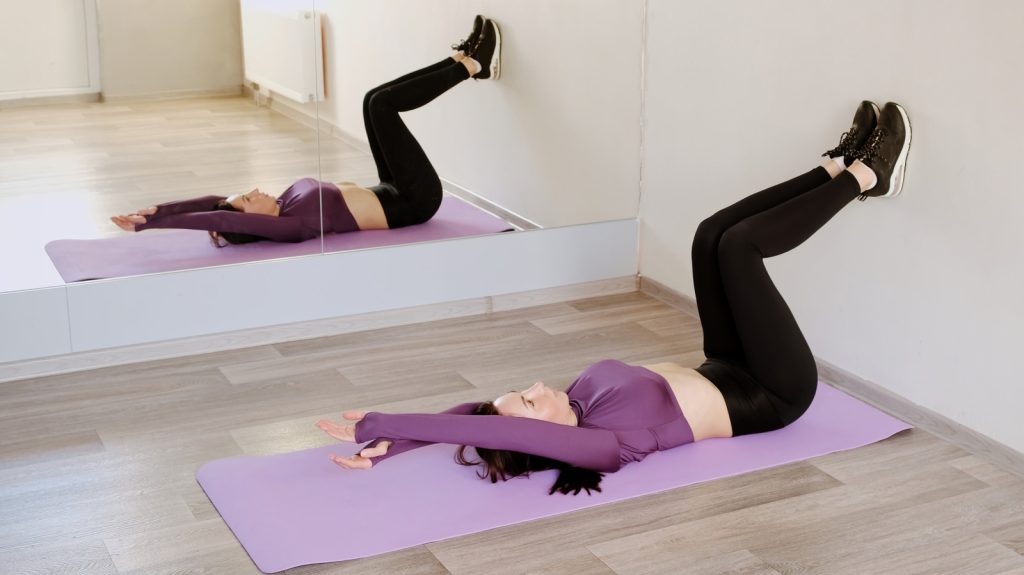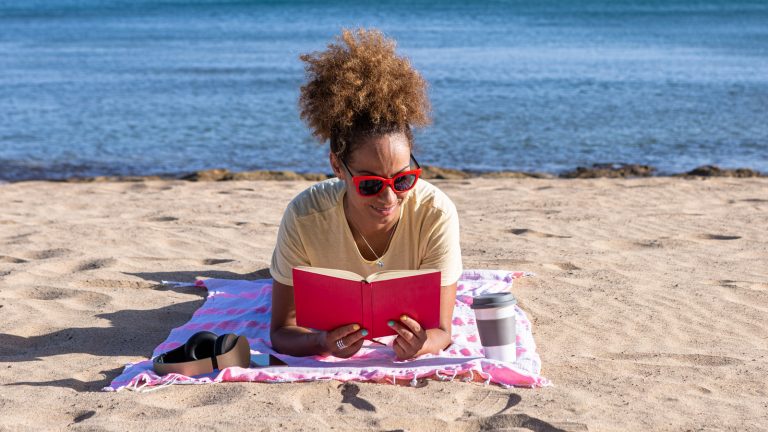Book Appointment Now
Who are wall Pilates for?
The best part about wall Pilates is that they’re for everyone. While not every position may be doable, there are at least a handful of positions that are accessible, making it fantastic for people who have never tried Pilates. “Wall Pilates improves core strength, posture, flexibility, and balance,” says Chris Mohr. “The wall helps with alignment and stability, making it better for beginners and ideal for those recovering from injuries or looking for low-impact exercise.”
Although everyone can use more balance and flexibility, it makes getting around in the world easier, after all, something we should all be thinking about is our posture. According to a 2021 study published in Gait and Posture, smartphone use does a number on our spine, producing negative changes in its alignment. This issue is so common that it has a name: tech neck. In fact, since it’s become clear that putting space between ourselves and our phones is near-impossible for many, experts predict that human beings will evolve into having a hunchback (among other things, like a smaller brain) in the future because of the effect our phone, tablets, and laptops are having on our spine. That alone is a good enough reason for wall Pilates.
Evolutionary theories aside, wall Pilates is also great for people who are regular practitioners. “Those who are advanced can use it to increase intensity,” says Mohr. “It suits a wide range of fitness levels, including older adults or those new to Pilates.”
How to do wall Pilates at home
As the name suggests, you’ll need a stable wall, as well as plenty of space around you so as to not knock into things. If you’re new to wall Pilates, start with the easiest positions before moving on to those that require more strength and flexibility.
“Examples [to get you started] include the wall bridge, where you press your feet against the wall to lift your hips, and the wall plank, where your hands rest on the wall for support,” Chris Mohr exclusively tells Women. “The wall roll-down helps stretch the spine and hamstrings while maintaining alignment, and leg lifts using the wall for balance are great for core and lower body strength. These moves are adaptable for most fitness levels.” Although some of these may seem simple and might feel relatively easy when put into practice, you will feel it in your muscles the day after, so don’t push it.
As Mohr explains, wall Pilates can be done two to four times per week for 20 to 40 minutes at a time, but again, consider your fitness level before jumping into longer sessions. According to a 2018 study published in JAMA Network, Americans sit way too much, with 25% sitting more than eight hours a day and 44% reporting that they don’t engage in “moderate to vigorous” physical activity every week. If you are one of these people and looking to make a lifestyle change with wall Pilates, take it slow.
Benefits of wall Pilates
In addition to its physical advantages, those aren’t the only reasons to give wall Pilates a try. In news that’s not even remotely surprising, in 2016, USA Today reported that 67% of gym memberships are never used. Whether it’s because your workout buddy constantly flakes on you or you just simply lack the motivation to get there, if you’re not using your membership, you’re not alone. But considering the average gym membership is $58 a month, or roughly $700 a year, per Renew Bariatrics, that’s a lot of wasted money — money that could have been spent on personal passions or nights out with friends if you had admitted to yourself that the gym wasn’t a fit for you.
Wall Pilates is also unbelievably convenient. If you’re doing just 20 minutes a day, you can easily make time for that because you’re not required to commute anywhere and you’re not restricted by a gym’s schedule. It’s all on your own time, making it one of the most accessible ways to get your body moving. If you’re already an active person who’s committed to the gym and is using your membership, then wall Pilates still may be something to look into as a means to work on other areas of your body. “Wall Pilates complements other workouts, like cardio or strength training, by improving flexibility, stability, and core strength, which can improve performance in those activities,” says Chris Mohr.
Possible downsides of wall Pilates
For the most part, you can’t go wrong incorporating wall Pilates into your routine. However, two instances stand in the way of making it a perfect workout. “When starting from nothing, yes, you can see improved strength or balance,” exercise physiologist supervisor at NYU Langone, Heather A. Milton, told Today. “[But] if you’re an already active person and decide to change your workout to this, I predict you will not see much improvement in one month.” Which makes sense — cardio and weight training are far more intense than wall Pilates. As Chris Mohr points out, Pilates can be used to complement the exercise routines of those particular people.
There’s also the issue of not having an instructor to guide you. While wall Pilates apps can show you how to do different positions, not being in a class can hinder just how effective wall Pilates can be. “Like any Pilates done at home by yourself, you don’t get any feedback or correction from a teacher,” founder of Power Pilates UK, Korin Nolan, told Women’s Health, adding that alignment, learning to engage your core, and breathing are necessary components of getting the most out of wall Pilates. “If you’re a beginner you may need a little more assistance,” says Nolan.
It’s also worth noting that if you have mobility issues or physical pain, consult your doctor first. While wall Pilates is meant to improve your health, you don’t want to exacerbate any pre-existing physical problems.








